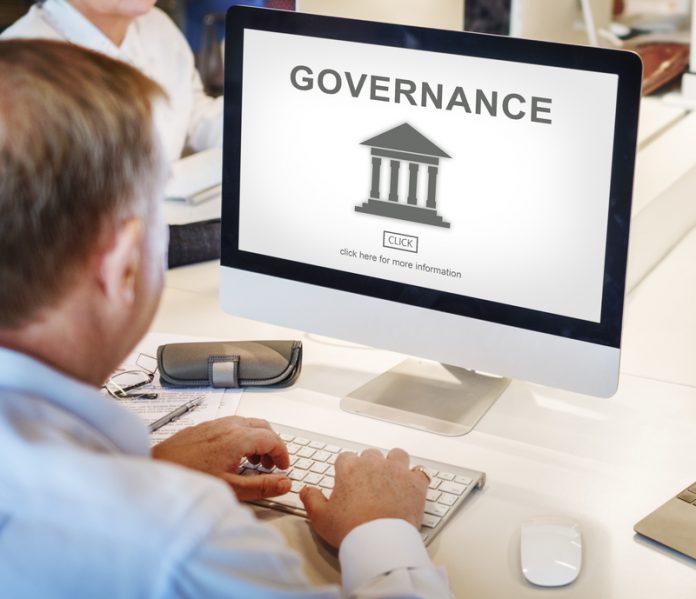Here Sascha Giese, SolarWinds, explains the two main approaches that can help close the perceived government IT divide
Government technology professionals dedicate much of their time to optimising their IT infrastructures. So, when new policies or cultural issues arise, it can be challenging to integrate these efficiently within the existing landscape.
The SolarWinds IT Trends Report 2018 revealed that, in the U.K. public sector, this challenge is yet to be resolved—43% of those surveyed cited inadequate organisational strategies as the reason for the lack of optimisation, followed closely by 42% who selected insufficient training investment.
Every public sector organisation has its own IT strategy, but many team members might not understand that strategy or know how they can support it. As such, they may not know how to use the tools at their disposal to implement this vision successfully.
Managers and their teams may benefit from collaborating to help bridge the knowledge gap that exists within organisations, and senior managers should find ways to communicate their organisational IT strategies so that their teams can map their activities toward those objectives.
Simultaneously, public sector entities and individuals should consider ways to improve knowledge sharing and training so that everyone has the skills to do their job successfully. There are two main approaches that can be taken to help close this perceived knowledge gap.
Communication should never be a one-off
Organisational IT strategy may start at the top, but often it can get lost in translation or diluted as it is passed down through the ranks—if it gets passed down at all. As such, IT managers might be doing their daily jobs, but they may not be working with an eye towards their agencies’ primary objectives.
One example of this is the use of public cloud, which—despite the Cloud First policy being introduced in 2013—is still not being realised across the U.K. government to its full potential, with less than two thirds (61%) of central government departments having adopted any public cloud so far.
Town hall meetings, internal blog posts, and emails informing of a policy change or new priorities are a great start but are rarely sufficient to drive change on their own. Agency IT leaders should consider implementing systematic methods for communicating and disseminating information, ensuring that everyone understands the challenges and opportunities and can work toward strategic goals. The strategy must be sold by the leadership, bought into by mid-level management, and actively and appropriately pursued by the overall workforce.
Messages could also then be reinforced on an on-going basis, whether through weekly meetings, quarterly check-ins, frequent email communications, reports, or other methods. The key is to make sure that the organisational strategy remains top-of-mind for everyone involved and is clearly and constantly articulated from the top down.
Training should be a team priority
A big part of driving new strategies is ensuring teams have the skills in place to achieve this. A busy environment can encourage a “check the box” mentality when it comes to training. People may do the minimum required to learn new material, skipping steps that could immerse them in new technologies or trends, like operational assurance and security, due to time pressures.
The IT Professionals Day 2018 survey by SolarWinds found that, globally, 44% of public sector respondents would develop their IT skillset if they had an extra hour in their workday. There is also sometimes less support from agencies and government contractors since training can sometimes be perceived as hurting, rather than helping, the organisation’s bottom line. Travel to seminars and class tuition fees cost money that agencies may not have.
Offsetting those costs is the fact that training can have a remarkably positive impact on efficiency. In addition to easing the introduction of new technologies, well-trained employees will also know how to better respond in the case of a crisis, such as a network outage or security breach—something that is particularly pertinent in the U.K. following the widespread media coverage of the WannaCry outbreak in 2017. Their expertise can save precious time and be an effective safeguard against intruders and disruption, which can be invaluable in delivering better services to the public.
That’s not to say that agencies do not recognise the value of education. In fact, many already allocate education allowances to their employees and have programs in place that support knowledge growth.
However, self-training can be just as important as agency-driven programmes. It may be beneficial in the long run for technology professionals to hold themselves accountable for learning about agency objectives and how tools can help them meet those goals, supported with an allocated portion of time that professionals can use for this purpose. People do not necessarily learn through osmosis, but through action, and all at different levels.
For this and other education initiatives, technology professionals should use the educational allowances allocated to them by their organisations, which can sometimes run into thousands of pounds. Take the time to learn about the technologies they already have in-house, but also examine other solutions and tools that will help their departments become fully optimised, especially when these may form part of a broader public sector IT strategy. Vendors will often be more than willing to help out through support programs and their own educational tools, including certification and training programs, online forums, and other offerings.
Though surveys like the IT Trends Report have highlighted the existence of a knowledge and information-sharing gap, implementing stronger communication and training initiatives into government organisations could help reduce this. And by producing better-optimised environments for IT teams, the quality of the service that their departments can deliver to the wider public is increased, bringing about better changes for all.
Sascha Giese











